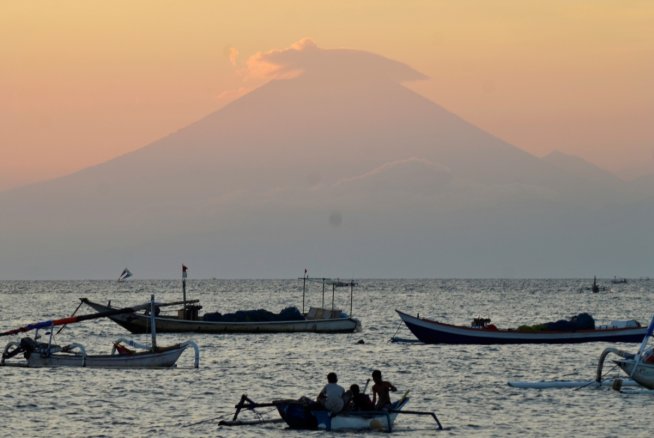
Mount Sinabung, the Pleistocene-to-Holocene stratovolcano in the North Sumatra region of Indonesia has erupted on October 12, sending fumes and ashes as high as 2 kilometers to the sky. Scroll down to read the five things to note from the spewing Mount Sinabung, and yet to erupt Mount Agung.
Eruption time
The volcano started spewing at 2.45 AM (Indonesia local time). Even though the eruption took place at early morning, there were no casualties reported. All emergency services were alerted soon after the eruption, and different agencies in Indonesia are working together to reduce the scale of possible damage in the coming hours. Local residents are being advised to stay outside the no-entry zone of seven kilometers surrounding the volcano.
Mount Sinabung on top alerts
Indonesia has as many as 129 active volcanoes in its geography. Mount Sinabung is on top alerts since 2015, as it started signs of eruption. Multiple eruptions happened in Sinabung in the last two months, and it created panic among local residents. As per latest updates, things are under control now, as agencies have made all necessary arrangements to safeguard the citizens. Indonesia's National Disaster Mitigation Agency has arranged all necessary precautions to act efficiently in times of urgency.
The shocking memory of May 2016
In May 2016, Mount Sinabung erupted, resulting in the death of seven people. Similar eruptions happened in 2014, which resulted in the death of sixteen people. The Indonesian Government is well aware of the possibility of volcanic activities in the country, and they have formulated effective action plans to ensure the safety of people in times of eruption.
Threats posed by Mount Agung volcano
Indonesian Government has put the Bali island too on high alert, as Mount Agung volcano too started showing signs of eruption. More than 200 earthquakes hit the area recently, and it has increased the possibility of a volcanic eruption at any moment. The residents are all in a state of panic after Bali Governor I Made Mangku Pastika declared a state of emergency in the island.
Usage of drones to monitor the eruption
Indonesia's National Disaster Mitigation Agency will be using drones to monitor the volcanic activities inside the crater. Gede Suantika, the Head of Volcano Mitigation of PVMBG, said that observing the volcano using drone will be very helpful in monitoring the color of smoke coming out from the crater.
According to Suantika, volcanic smoke will be usually white, grey or yellow, but in some cases, dark fumes characterized by the presence of volcanic ashes may start rising, and it is very dangerous in nature.









